Cerrar

Developing project schedule:
- The WBS identifies the activites and tasks that must be completed in order to prvide project scope and deliverables
- Estimates provide a forecasted duration for each of these activities. They are based on the characteristics of the activity, the resources assigned, and the support
- Gantt chart can be used for planning. Estimates for the tasks or activities in the WBS are represented using a bar across a horizontal time axis
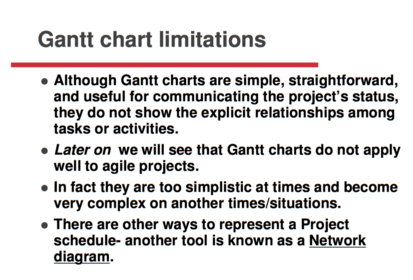
- But project network diagrams also provide valueable information about the logical sequnce and dependencies among the various activities and tasks
- Also, a completion date or project deadline should be developed based on a sound estimate pricess rather than guesstimating a target date or a randomly set date
- They also provide info concering when specific tasks must start and finish, and what activities may be delayed without affecting the deadline
- PM can make decisions regarding scheduling and resource assignments to shorten the time required for those critical activities thatt will inpact the project deadline
- Critical path is calculated using the network diagram
Building the network:
Two ways of displaying a project network:
1. Activties on arrows (AOA) network
- the activities are shown as arrows and events as notes
- Difficult to draw but show the technical relationship of the activities well
2. Activities on node (AON) network
- Each task is shown as a node and the technological relationship is shown by the arrows
AON network usaully associated with CPM
AOA network usuaully associated with PERT
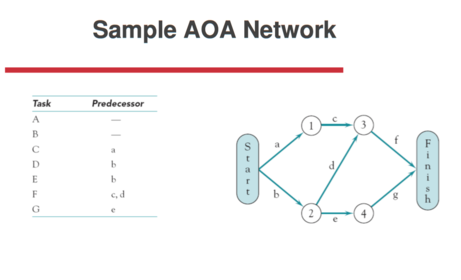
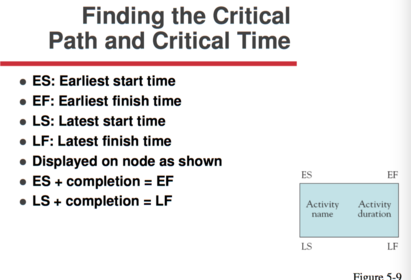
Manageral implications
- Primary attention of the PM should be to the activities on the critical path
- If anything delays one of these activites, the project will be late
- Projects are easier to manage when there is project slack
Resources:
- Projects compete with each other for resources:
1. if a resource is used but not consumed, which project must wait to use the resource
2. if resource is consumed during use, may not be available for other projects or other other projects must wait for replacement
In either case, one project must wait, one is delayed.
- Likely different activities compete for resources
- Trade-offs must be made
1. First you may inflate an estimate if your work is depended upon someone else
For example, you may add a cushion to your time estimates if you believe there’s a good chance your work will be delayed if the person you are depending on will not finish his or her task or work on time.
2. Second, you may increase an estimate of an activity because of pessimism arising from a previous experience where things did not go as planned
3. Third a project sponsor or customer may not be happy with a proposed schedule and therefore decides to cut the schedule gloablly by say 20%
- If you know this is going to happen, you may inflate your estimates by 25 percent just to guard against the cut.
Why do projects still finish late?
Parkinson's law:
- This law states that workds expands to dill the time available
For example, an individual or a team assigned to complete a particular task will rarely report finishing early because there is no incentive to do so.
They may be afraid that management will cut their estimates next time or the individual or team waiting for them to complete their task won’t be ready. As a result, the safety built into an estimate disappears. Any time saved by completing a task early is wasted while any overruns get passed along.
Resource contention
A third reason why safety does not ensure projects will be completed on time bc it has to do with multitasking of resource , called resource contention.
- A project team member is often assigned more than one project. This person will be required to attend meetings, traiing, or be pulled off one project task to work on another
-As a result, this person can become a constraint to the project because he or she is no longer able to devote time and energy to tasks on the critical path. Subsequently, the task takes longer, and so does the project.
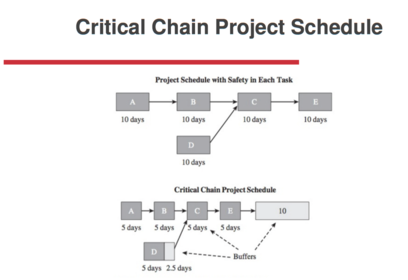
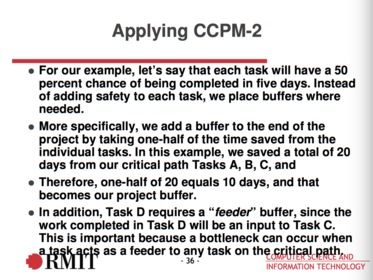
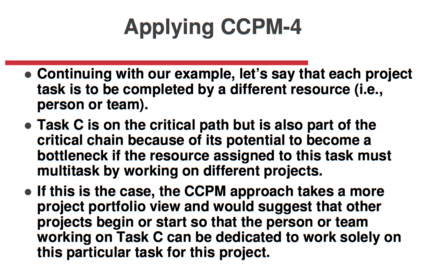
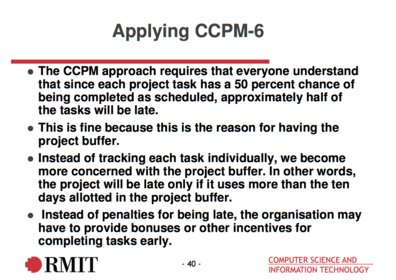

 Ocultar las fichas que te sabes
Ocultar las fichas que te sabes